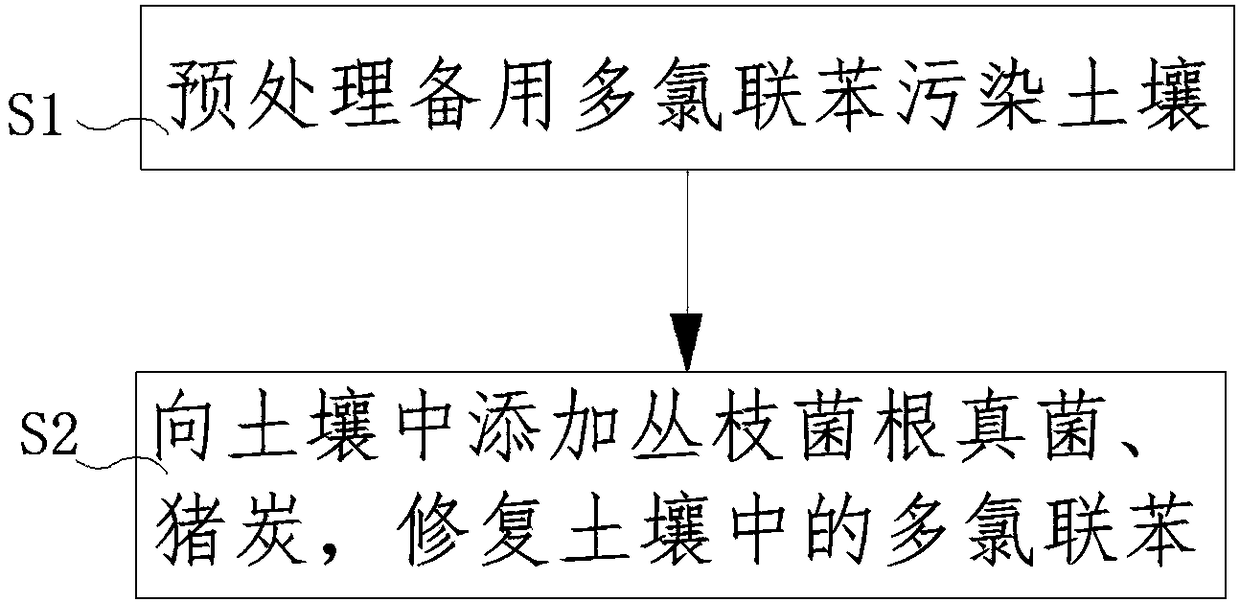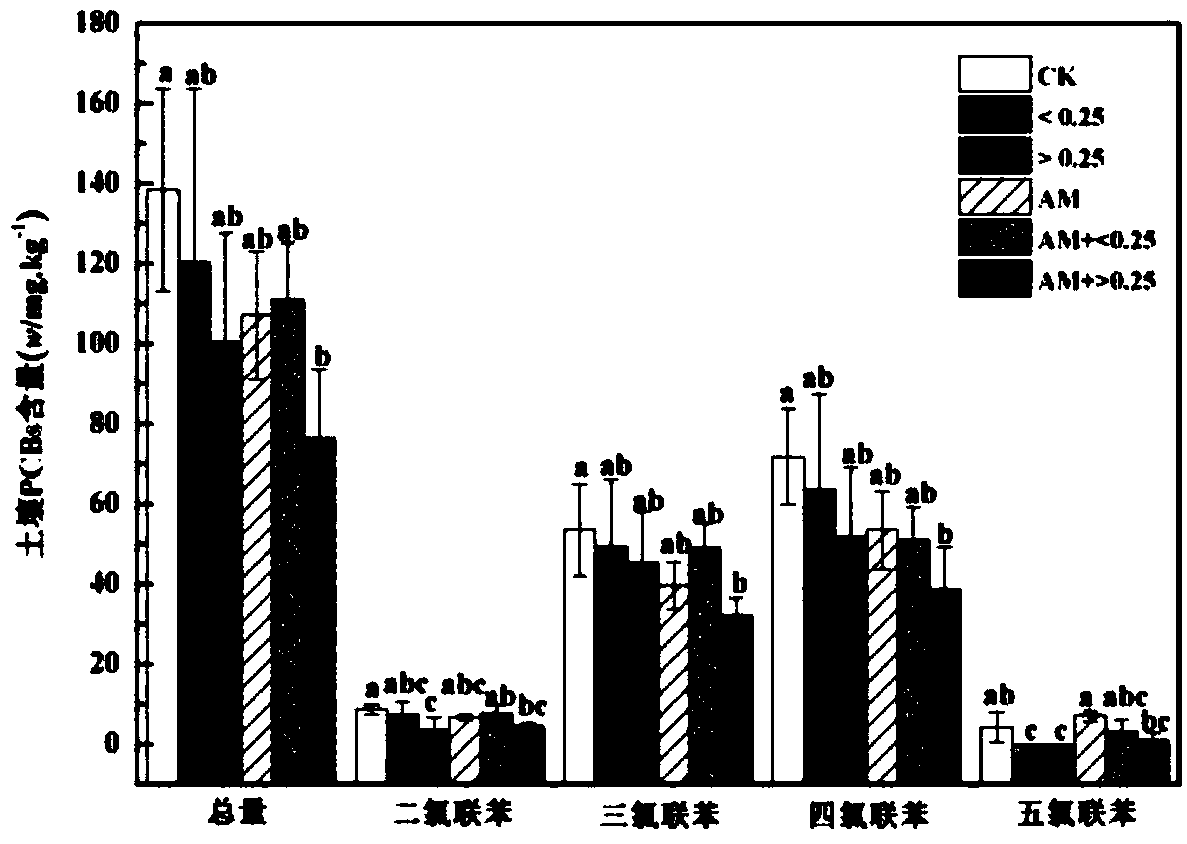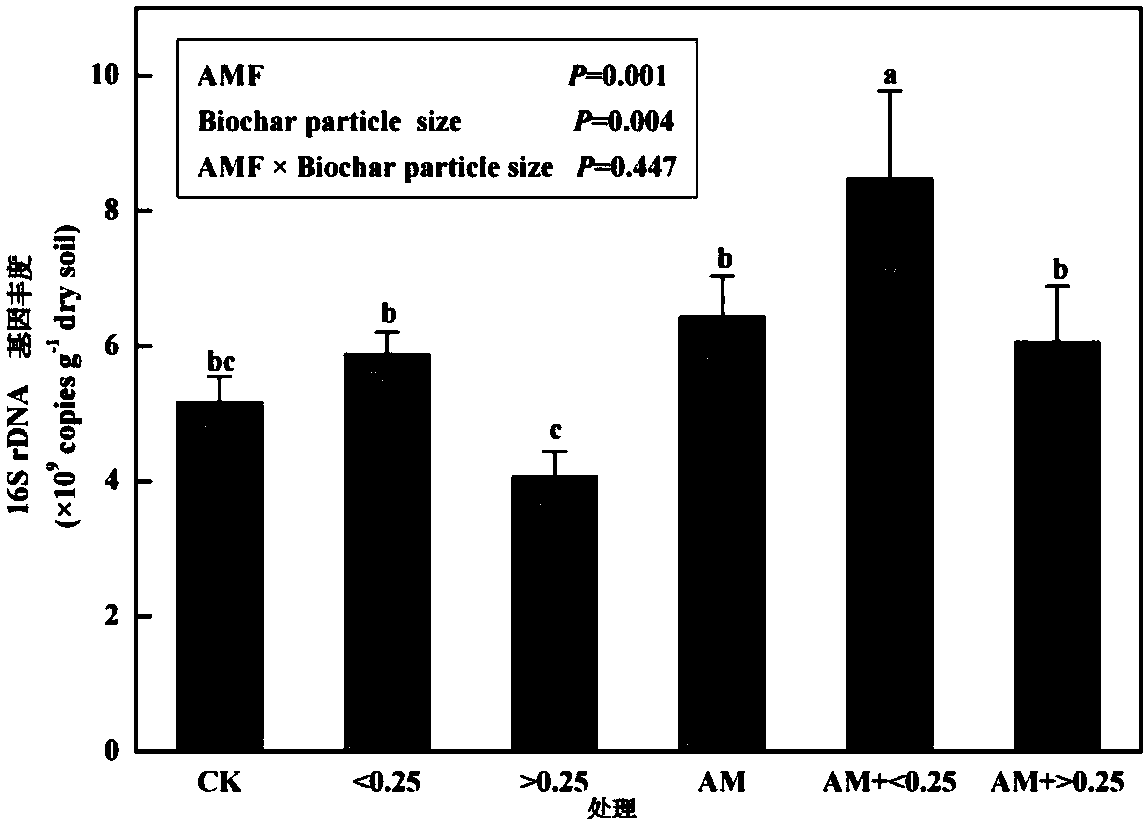Method for remediating polychlorinated biphenyl-polluted soil by utilizing arbuscular mycorrhizal fungi and combining pig-derived biochar
A technology of arbuscular mycorrhizal fungi and polychlorinated biphenyls is applied in the field of remediation of polluted soil, which can solve the problems of reducing bioavailability, lack of, and changing the activity of soil microbial community, so as to promote the degradation rate, increase the effective phosphorus content, and promote the Effect of Mycorrhizal Fungal Infection Rate
- Summary
- Abstract
- Description
- Claims
- Application Information
AI Technical Summary
Problems solved by technology
Method used
Image
Examples
preparation example Construction
[0025] Preparation of pig charcoal in step B: use a pyrolysis device to pyrolyze a dead whole pig at 650°C under anoxic conditions, grind it into fine particles, and sieve it with a stainless steel sieve with a particle size of 0.25 mm.
[0026] The particle size of the sown pig charcoal is one of less than 0.25 mm or greater than 0.25 mm.
[0027] The bacterial strain is Physiocystis mosesi with the preservation number M47V.
[0028] The soil for the test was collected from an electronic waste dismantling site in Taizhou City, Zhejiang Province. The surface soil 0-20cm was collected, gravel and other debris were removed, and it was fully mixed after natural air drying. The basic physical and chemical properties of the mixed soil are pH 8.17 and organic carbon 15.34g kg -1 , available phosphorus 16.84mg kg -1 , available potassium 112.19mg kg -1 , Soil PCB concentration 181.14mgkg -1 , is seriously polluted; the tested corn is Jingke Nuo 2000, which was purchased from a lo...
Embodiment 1
[0030] With no inoculation of arbuscular mycorrhizal fungus and no addition of pig charcoal as a control, take 1300 g of air-dried PCB-contaminated soil and put it into a plastic pot with a capacity of 2.5 L, mix it evenly and add water until the soil moisture content reaches the maximum sustainable value in the field. 60% of the amount of water; select corn seedlings with similar growth, and transplant each three as a group into each potted plant to cultivate the corn seedlings. The potted plants are calculated from transplanting and grow for 90 days at normal temperature; after the cultivation period ends, Plants were harvested and soil samples were taken for analysis of corn biomass, soil PCB content, and microbes.
Embodiment 2
[0032] Take 1300g of air-dried PCB-contaminated soil and 37.1g of pig charcoal with a particle size less than 0.25mm into a plastic pot with a capacity of 2.5L, mix evenly and add water until the soil moisture is 60% of the maximum water holding capacity in the field; choose Corn seedlings with similar growth are transplanted into each potted plant as a group of three, and the corn seedlings are cultivated. The potted plants are counted from the time of transplanting and grown at room temperature for 90 days; after the cultivation period, the plants are harvested and soil samples are taken , analysis of corn biomass, soil PCB content, and microorganisms.
PUM
 Login to View More
Login to View More Abstract
Description
Claims
Application Information
 Login to View More
Login to View More - R&D
- Intellectual Property
- Life Sciences
- Materials
- Tech Scout
- Unparalleled Data Quality
- Higher Quality Content
- 60% Fewer Hallucinations
Browse by: Latest US Patents, China's latest patents, Technical Efficacy Thesaurus, Application Domain, Technology Topic, Popular Technical Reports.
© 2025 PatSnap. All rights reserved.Legal|Privacy policy|Modern Slavery Act Transparency Statement|Sitemap|About US| Contact US: help@patsnap.com



